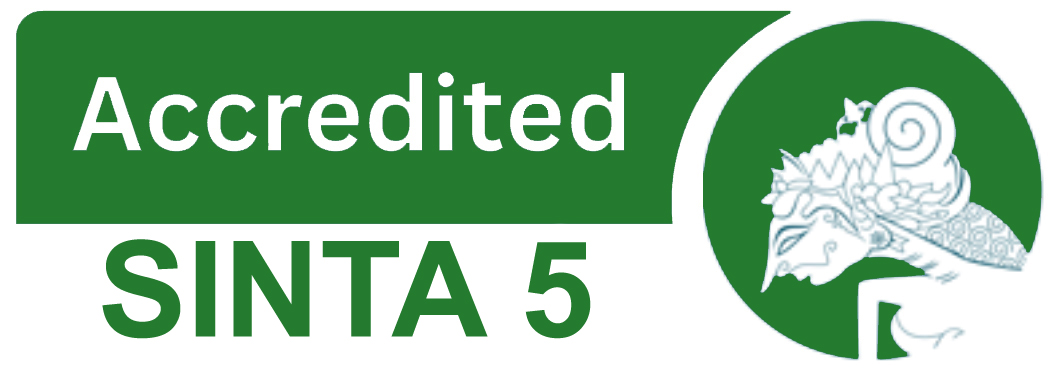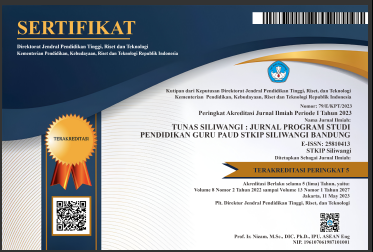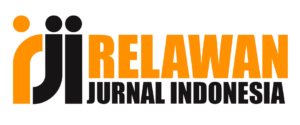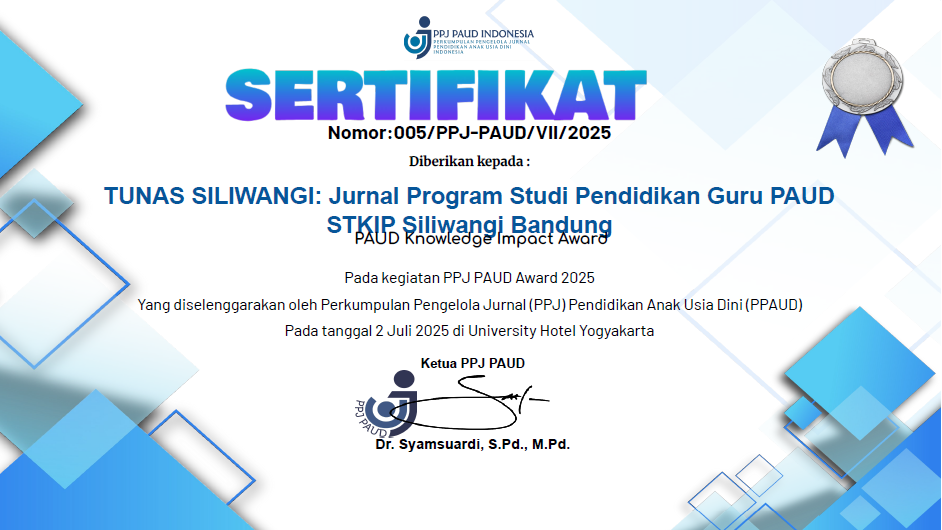The contribution of science learning to the formation of positive emotions in early childhood
DOI:
https://doi.org/10.22460/ts.v11i1.5963Keywords:
science learning, Positive Emotions, Early ChildhoodAbstract
Science learning has a very important role in early childhood development, because it can help them explore the contribution of science to the formation of positive emotions. This can be seen from the emotions of children in group A at KB Lab PAUD Terpadu Tunas Siliwangi, who have not been able to express their emotions naturally. Therefore, this study aims to develop positive emotions in children through the application of science learning. The method used in this research is descriptive qualitative, which includes direct observation and interviews. The research was conducted for eight meetings, involving eight children as subjects, consisting of four boys and four girls. Data analysis was conducted through data reduction, data presentation, and conclusion drawing. At the initial meeting, it was seen that the children began to show emotional development. However, after eight meetings, the results showed that science learning significantly increased children's curiosity, excitement and satisfaction. This contributed positively to their emotional development, creating a more supportive learning environment.
References
Ariani, L. (2019, April). Keterlibatan siswa (student engagement) di sekolah sebagai salah satu upaya peningkatan keberhasilan siswa di sekolah. In Prosiding Seminar Nasional & Call Pape, Banjarmasin (Vol. 13, pp. 103-110). https://doi.org/10.31004/cdj.v5i3.30450
Chasanah, L. M. N., & Khotimah, N. (2024). Eksploratif Sains Anak Usia Dini melalui Pembuatan Ice Cream Sederhana. Journal of Education for All, 2(2), 119-123. https://doi.org/10.61692/edufa.v2i2.121
Handayani, N. S., & Dewi, R. S. (2023). Penggunaan Metode Eksperimen Dalam Pembelajaran Sains Di TK As-Sunnah. As-Sibyan: Jurnal Pendidikan Anak Usia Dini, 8(2), 169-182.https://doi.org/10.32678/assibyan.v8i2.9428
Hartati, S. (2022). Peran pendidikan berbasis alam dalam mengembangkan kecerdasan alami anak. At-Tajdid: Jurnal Pendidikan dan Pemikiran Islam, 6(2), 161-172. http://dx.doi.org/10.24127/att.v6i2.2381
Izzuddin, A. (2019). Sains dan Pembelajarannya pada Usia Anak Dini. BINTANG , 1 (3), 353-365. Diambil dari https://ejournal.stitpn.ac.id/index.php/bintang/article/view/714.
Khusniyah, F. (2024). Eksperimen Biji – Bijian Menari dalam Pembelajaran Sains untuk Meningkatkan Kemampuan Kreatif Pada Anak Usia 4-5 Tahun di RA Nurul Hidayah Desa Sumberagung Kecamatan Kephbaru Kabupaten Bojonegoro (Doctoral dissertation, Universitas Nahdlatul Ulama Sunan Giri).https://repository.unugiri.ac.id:8443/id/eprint/6717
Laila, Y., Sarumaha, M. S., & Laia., B. (2022) Bimbingan Konseling dalam meningkatkan Kemandirian belajar siswa di SMA Negeri Susua tahun pelajaran 2021/2022. Counselling for all: Jurnal bimbingan dan konseling. 2 (1), 1-12. https://doi.org/10.57094/jubikon.v2i1.367
Nisfa, N. L., & Putri, F. K. A. (2022). Pembelajaran sains inquiry pada anak usia dini. Tinta Emas: Jurnal Pendidikan Islam Anak Usia Dini, 1(1), 29-42. https://doi.org/10.35878/tintaemas.v1i1.384
Novianti, R. (2022). Model Pembelajaran Untuk Menumbuhkan Karakter Peduli Lingkungan Mata Pelajaran IPA. JPB-Jurnal Pendidikan Biologi, 2(2), 16-23.https://doi.org/10.55719/jpb.v2i2.550
Nur, N., & Nugraha, M. S. (2023). Implementasi Model Pembelajaran STEAM Dalam Meningkatkan Kreativitas Peserta Didik Di RA Al-Manshuriyah Kota Sukabumi. Jurnal Arjuna: Publikasi Ilmu Pendidikan, Bahasa Dan Matematika, 1(5), 73-93.https://doi.org/10.61132/arjuna.v1i5.158
Prasetyo, S. (2017). Implementasi pembelajaran sains untuk anak usia dini dalam menghadapi masyarakat ekonomi asean (mea). Literasi: Jurnal Ilmu Pendidikan, 7(1), 58-66.http://dx.doi.org/10.21927/literasi.2016.7(1).48-57
Rahmadhar, Y., & Meilana, S. F. (2022). Pendidikan Karakter Agama Melalui Pembelajaran Sains. Al-Madrasah: Jurnal Ilmiah Pendidikan Madrasah Ibtidaiyah, 6(4), 1325-1333.http://dx.doi.org/10.35931/am.v6i4.1259
Sa'diyah, H., Fajari, L. E. W., Aini, S., & Fajrudin, L. (2023). Efektivitas Penerapan Model Pembelajaran Berbasis Proyek Terhadap Peningkatan Keterampilan Sosial Siswa di Sekolah Dasar. Kalam Cendekia: Jurnal Ilmiah Kependidikan, 11(1). https://doi.org/10.20961/jkc.v11i1.71789
Shofia, S., & Dirgayunita, A. (2024). Studi Literatur Perkembangan Kemampuan Bahasa Anak Usia 4-6 Tahun Bercerita. Al-Athfal: jurnal pendidikan anak, 5(1), 76-93.https://doi.org/10.46773/alathfal.v5i1.979
Sugiyono, S. (2015). Metode Penelitian Kuantitatif Kualitatif Dan R & D Cetakan 17. Bandung: CV Alfabeta.
Suhardja, M., & Watini, S. (2022). Implementasi Pembelajaran Model Asyik Terhadap Perkembangan Kemandirian Anak Kelompok B Di RA Miftahul Jannah. Aksara: Jurnal Ilmu Pendidikan Nonformal, 8(3), 1915-1926.http://dx.doi.org/10.37905/aksara.8.3.1915-1926.2022
Verdianingsih, E. (2018). HARGA DIRI DALAM PEMBELAJARAN MATEMATIKA Harga Diri dalam Pendidikan Matematika. EDUSCOPE: Jurnal Pendidikan, Pembelajaran, Dan Teknologi , 3 (2), 7–15. Diambil dari https://ejournal.unwaha.ac.id/index.php/eduscope/article/view/192
Yaswinda, Y., Nilawati, E., & Hidayati, A. (2019). Pengembangan Media Video Tutorial Pembelajaran Sains Berbasis Multisensori Ekologi untuk Meningkatkan Kognitif Anak Taman Kanak-Kanak Kelompok A. Jurnal Audi: Jurnal Ilmiah Kajian Ilmu Anak Dan Media Informasi PAUD, 4(2), 100-109. http://orcid.org/0000-0002-5830-9209
Downloads
Published
Issue
Section
License
Copyright (c) 2025 Heni Nafiqoh, Ratna Dwi Nurcahyani, Suryamah Suryamah, Fanny Khotimah

This work is licensed under a Creative Commons Attribution-ShareAlike 4.0 International License.
The author is responsible for acquiring the permission(s) to reproduce any copyrighted figures, tables, data, or text that are being used in the submitted paper. Authors should note that text quotations of more than 250 words from a published or copyrighted work will require grant of permission from the original publisher to reprint. The written permission letter(s) must be submitted together with the manuscript.







